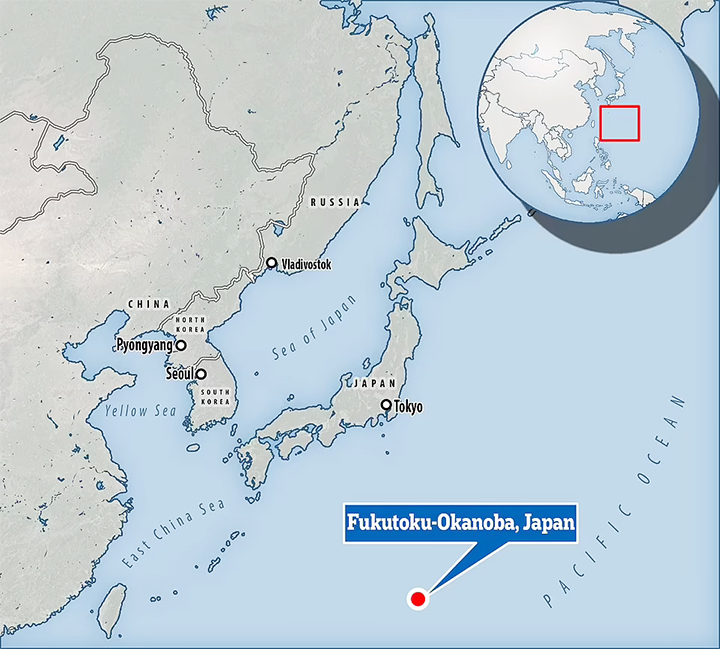Fukutoku-Okanoba Volcano: Japan | 01 Sep 2021
Why in News
Recently, the Fukutoku-Okanoba Submarine Volcano exploded in the Pacific Ocean, off Japan.
- Earlier, a surge of Earthquakes and the ground swelling was noticed at Hawaii’s Kilauea Volcano.
Key Points
- It is situated about 25 metres below the sea, five kilometres north of Japan’s South Iwo Jima Island.
- The plume reached a height of 16 kilometres above the surface, which poses a risk to the passage of planes and ships.
- Plume went straight from being a submarine event to an eruption cloud reaching the lower boundary of the Stratosphere, this is not very common for this type of volcano.
- Normally lower-level plumes are seen from submarine eruptions.
- Eruption and submarine hydrothermal activities often cause water discoloration in the area, and during eruption, the volcano has built several temporary new islands.
Submarine Volcanoes
- From Hawaii to Indonesia to Iceland, hundreds of islands across the globe have been formed by submarine volcanoes. Submarine volcanoes are exactly what they sound like—volcanoes located beneath the ocean’s surface.
- Because they erupt into water instead of air, submarine volcanoes behave quite differently than terrestrial volcanoes. For instance, it’s uncommon for submarine volcanoes to have explosive eruptions.
- The sheer weight of the water above them creates very high pressure, usually resulting in what are known as passive lava flows along the seafloor. Most submarine eruptions do not disturb the ocean surface.

